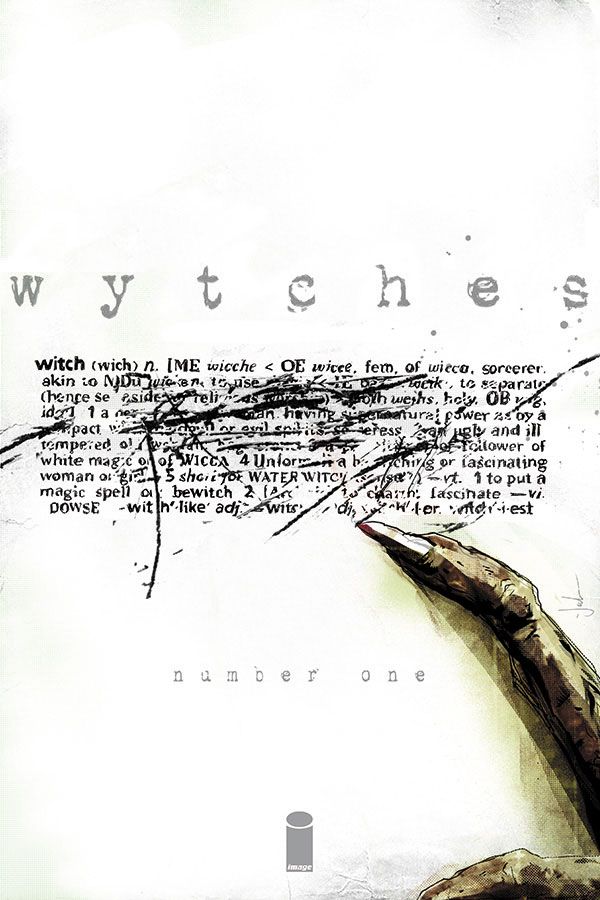After a bullying episode concerning their daughter Sailor ends tragically, the Rooks family moves to a new town to leave those terrible memories behind -- only to encounter something far more sinister. Scott Snyder and Jock team up once again to redefine our idea of "Wytches," inventing a story that will horrify readers on every level.
True to its genre, "Wytches" #1 has all the trappings of a horror piece: the twisted cold open, an isolated house in the woods, strange animal behavior, the flickering appearance of a slender figure -- the works. Snyder peppers these elements in organically throughout the issue, spending much more time fleshing out the characters than he does on shock-value thrills. Just when the reader starts to feel safe -- following, say, a father-daughter bonding sequence -- these conventions creep back into view, building towards the cliffhanger with every iota of suspense that Snyder and Jock can muster. That isn't to say, of course, that the issue is totally without those unsettling scenes that are jarring based on their sheer brutality alone; no, those come often enough -- preceded by an eerie rustling noise that will make your skin crawl -- but they both add to the tension and push the plot forward.
As much as the book plays to classic horror movie tropes, Snyder and Jock work in a much more subtle dimension that revolves around thirteen-year-old Sailor. While a more supernatural presence slinks in and out of her peripheral, Snyder and Jock trap her in a "first day of school" nightmare that feels equally real and alarming -- one where everyone knows her and her deepest secret, but she has no allies and no support. Her experience there triggers a disturbing flashback to a time where Sailor was mercilessly bullied, bringing the Rooks' family story full circle just before it ties into the issue's conclusion; the scene rests on a pervasive, contemporary issue that gives the story a modern touch even as it nods at time-tested genre conventions.
Though Sailor's first day may not have gone so well, her chemistry with her family lends credence to her character. Through body language and expression, Jock's figures emanate the love and concern the Rooks' feel for one another, from Charles' tense jaw and worried brow, to Lucy's soft but stable disposition, to Sail's begrudging smile as she banters with her father. Snyder's dialogue reinforces this tender relationship easily and naturally, resulting in interactions that are an absolute pleasure to read, but Jock could make these characters stand strong all on their own with this knack for figure work.
Figure work is not the only area in which Jock excels. His thickly inked, rough lines set up the dark mood immediately, throwing readers into a deeply shadowed world. He conveys complex ideas, like the opening's claustrophobic atmosphere, with delicacy and grace. What's more, he isn't afraid of getting a little dirty, pulling off gory and gut-wrenching sequences that will make readers cringe. Between Jock and colorist Matt Hollingsworth, the book has an old, weathered texture that glosses over the page, most notably in the opener. This gives the story an ancient, almost forbidden feel, something akin to finding cursed letters in your basement or cracking open the Necronomicon. Although Hollingsworth leans more on a muted, yellowed palette for day and murky greens and blues for night, he throws in spectacular splotches of red that accentuate Jock's more horrifying sequences.
For all its strengths, the book has a few minor slips. For instance, as Charles discusses a project with his agent and old friend Reg, it's hard to place the dialogue with the character speaking, which colors the rest of the scene with confusion. Likewise, though it's clear that the Rooks have moved, it's hard to say from where or how far they've traveled, which seems like an important factor that would impact how much Sailor's classmates knew of her situation; also, it would strengthen the implied "you can't run" aspect of her supernatural encounters. Further, the cliffhanger feels as though it left off one page too soon. Although there's some idea of what's coming, there's also no searing image left to carry readers from the end of this issue to the next. As small as these issues seem, they ultimately affect the cohesion of the story as a whole.
With an October release, "Wytches" #1 comes out just in time for Halloween and its dark tone could not be more apt to suit the season. Snyder and Jock's "Wytches" is at once outlandish and grotesque and alarmingly intimate in the way it dishes out horror.

